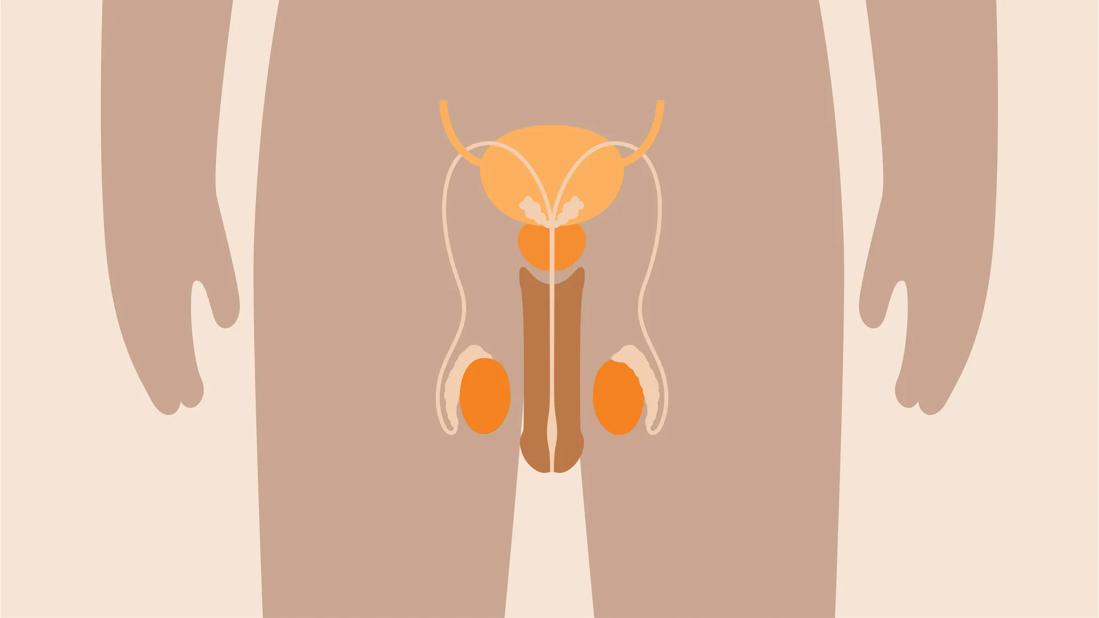A self-exam takes only two minutes once a month

Setting aside two minutes a month could save your life. That’s how little time it takes to do a self-exam to check for testicular cancer.
Advertisement
Cleveland Clinic is a non-profit academic medical center. Advertising on our site helps support our mission. We do not endorse non-Cleveland Clinic products or services. Policy
Here’s the reality, though: You just may not be reaching down there to “check your berries” on a regular basis. In fact, only 4 in 10 men surveyed by Cleveland Clinic reported doing a regular self-exam of their testicles.
That’s a missed chance to get ahead of a health issue, says urologist Samuel Haywood, MD. “Testicular cancer is very treatable, with a cure rate of 95%,” says Dr. Haywood. “But you have to know it’s there to treat it.”
This is a hands-on activity best done after a warm bath or shower. The warmth relaxes the skin of your scrotum, which makes it easier for you to feel for anything unusual. (As an added perk, you’re already naked, too.)
Now, let’s walk through the process.
Your left and right testicles may be different sizes. That’s OK, says Dr. Haywood. As you check month to month, though, note if your testicles seem to change in size, shape or firmness. A change is worth a call to your doctor’s office.
Advertisement
One last note: As you do the self-exam, you’ll come across a cord-like item on top and in back of each testicle. This is called the epididymis, and it’s supposed to be there. The tubular structure stores and transports sperm.
The lumps that come with testicular cancer are often painless, meaning they’re not likely to draw attention and announce their presence in a typical something-is-wrong sort of way, notes Dr. Haywood.
So, it’s usually up to you to find them, which is why self-exams are recommended once a month after puberty.
Testicular cancer happens most often between the ages of 20 and 35. A few factors may increase your chances of developing testicular cancer and make self-exams even more critical, including:
There’s also an association between infertility and testicular cancer. In addition, testicular cancer is more common among people who are white.
Overall, testicular cancer is relatively uncommon. Deaths do happen but are somewhat rare.
It's typically curable, even at later stages, with an overall cure rate is 95%. If it's detected early, that success rate climbs to 98%.
“The key is early identification,” stresses Dr. Haywood. “So, take the two minutes a month to do a self-exam.”
Advertisement
Learn more about our editorial process.
Advertisement

An unexplained lump, swelling, discomfort or changes to your testicles shouldn’t be ignored

Pain in the scrotum can be serious

Most of the risk factors aren’t things you can control, but making healthy lifestyle changes and managing other health conditions may help

Arousal without orgasm can be uncomfortable, but it’s no reason to pressure sexual interactions

From washing your hands and disinfecting surfaces to boosting your immune health, there are many ways to reduce your flu risk

Masking can help reduce the spread of respiratory illnesses in certain situations

The list includes eating a healthier diet, managing your weight and reducing stress

Adjusting your diet to focus on plant-based, whole foods may improve erectile function

The best parenting style balances enforcing rules and showing plenty of love

Tips include cutting back on sugar, focusing on exercise and managing stress

It can be harder to let go when you’ve invested time, energy and emotions — but it might be the healthier choice long term